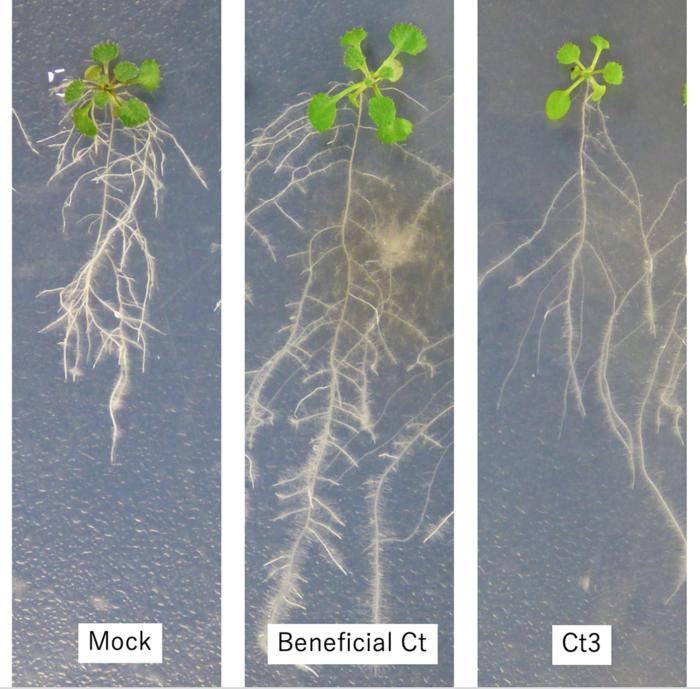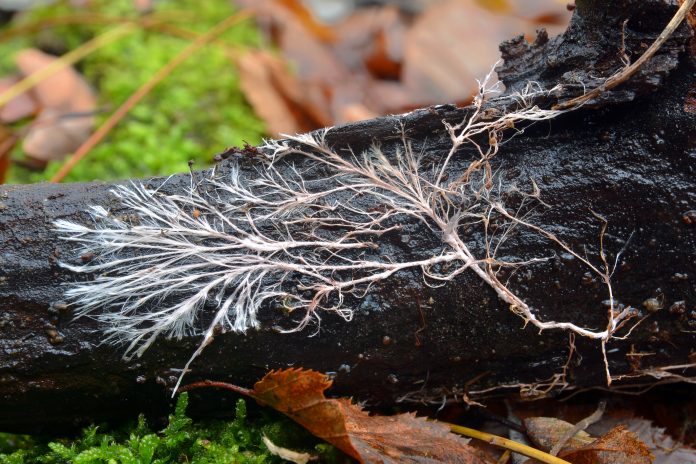The mould and diseases caused by root fungus can impact the preservation of fruits and vegetables, potentially shortening their shelf life. However, could certain fungi be altered to benefit their host?
Colletotrichum tofieldiae (Ct) is a root mould that typically supports the ongoing growth of plants, even when they lack phosphorus, a crucial nutrient for photosynthesis and growth.
Colletotrichum tofieldae gene cluster
Researchers have examined a unique pathogenic strain of the fungi called Ct3, which has the opposite effect of inhibiting plant growth. By comparing these Ct strains, they found that activating a specific single gene cluster related to fungal secondary metabolism is pivotal in determining whether the fungus harms the host plant.
When the gene cluster was interrupted, either through genetic modifications or changes in the environmental conditions, the fungi’s behaviour changed from inhibiting plant growth to promoting it.
By understanding mechanisms like this, food waste could be reduced by harnessing the beneficial roles that fungi can play in preserving and enhancing food quality.
Food waste could be reduced by harnessing the beneficial roles that fungi can play in preserving and enhancing food quality
The cause of fresh fruit growing mould is typically a disease-causing fungus called Botrytis. It devastates food crops worldwide and can easily be spread through wind and soil.
However, numerous other fungi establish less destructive relationships with their host plants, sometimes even forming symbiotic partnerships that promote the plant’s health.

Encouraging beneficial fungal traits
Encouraging beneficial fungal traits while preventing issues like mouldy fruit can significantly improve global food security and reduce food waste.
“Surprisingly, we found that a single fungal secondary metabolism gene cluster, called ABA-BOT, solely determines whether the fungus exhibits pathogenic or mutualistic traits toward the host plant,” said Associate Professor Kei Hiruma from the Graduate School of Arts and Sciences at the University of Tokyo.
Colletotrichum tofieldae is a fungus that typically helps plants with a phosphorus deficiency, helping them develop despite lacking this vital nutrient. Ct has been known to boost the growth of crops such as maize and tomatoes.
In this research, scientists from multiple institutions used thale cress as the host plant and introduced six different Ct strains from various locations to infect it. Five of these strains significantly enhanced plant growth.
However, the sixth strain, called Ct3, had the opposite effect. It hindered nutrient uptake, inhibited plant growth, and caused disease-like symptoms.
“We identified two key points: First, on the fungal side, that Ct3 activates the ABA-BOT biosynthesis gene cluster; and second, on the plant side, that Ct3 induces the host plant’s ABA signalling pathways, through which the fungus inhibits plant growth,” explained Hiruma.
The research discovered that both harmful and beneficial strains of Colletotrichum tofieldae have the ABA-BOT gene cluster. Still, these genes remained inactive in the mutualistic strains, meaning they weren’t switched on.
The implications for pathogens and mutualists
This discovery was a surprise because pathogens and mutualists were traditionally thought to have distinct characteristics. Still, this study’s findings suggest a more complex relationship between them.
When the gene cluster was disrupted, either through genetic modifications or changes in the plant’s environment, the Ct3 was rendered nonpathogenic and even became beneficial to the host, promoting root growth.
Further study is still needed, but the ABA-BOT gene cluster might play a role in the disease-causing potential of various fungi, not just in the Ct species.
For example, it may be involved in the pathogenesis of the Botrytis, which afflicts our household fruit and vegetables.













